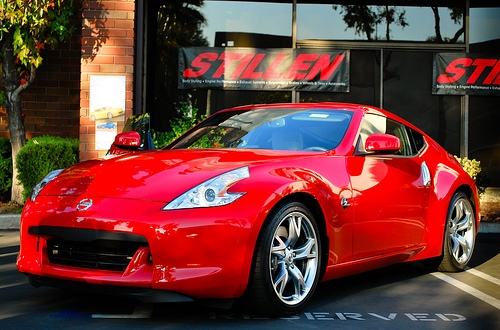
Painting a car requires planning, a dust-free environment and proper tools for a successful finish. Several types of paint can be used. Some are more toxic than others and require that a higher level of precaution be taken to minimize or eliminate inhalation of particles. If you plan on painting at home, research all precautions that should be taken with these chemicals before beginning your project.
The most common types of paint are acrylic enamel, acrylic lacquer and urethanes. Acrylic enamel paints need a catalyst to harden the paint. They are a thicker or heavier paint and do not require as many coats as a thinner paint product. Acrylic lacquers need 12 to 24 applications to produce a quality paint job. These dry in just a few minutes and are applied in separate periods of time. Six to eight coats are applied on the first day, six more coats the second day after wet sanding and drying, and additional coats in the same manner. Acrylic lacquer painting errors are easier to repair than other types of auto paint.
Urethanes have highly toxic fumes and require that a respirator be worn during use. They are thicker than acrylic lacquer paints and require fewer coats. Urethanes need a catalyst to chemically harden. Scottgrundfor.com recommends thinning with 1 part paint to ½ to 1 part thinner.
Clear coats should always be used after a paint application to protect it. Use three coats over acrylic enamel and urethane and up to eight coats over lacquer finishes.
You will need a paint spray gun, an air compressor, protective clothing and respirator and 500-grit sandpaper. A thinner or reducer must be used to make paint thin enough to use in a spray gun.
Research the manufacturer's recommendations for the sealer that is compatible with the type of paint you will be using.
A rough finished surface could be the result of excessive air pressure in the spray gun, paint that is too thick or not spraying close enough to the car part.
Repainting your automobile can increase its resale value and beauty.
Leftover paint and paint thinner should not be disposed of with your regular garbage as they can be an environmental hazard.